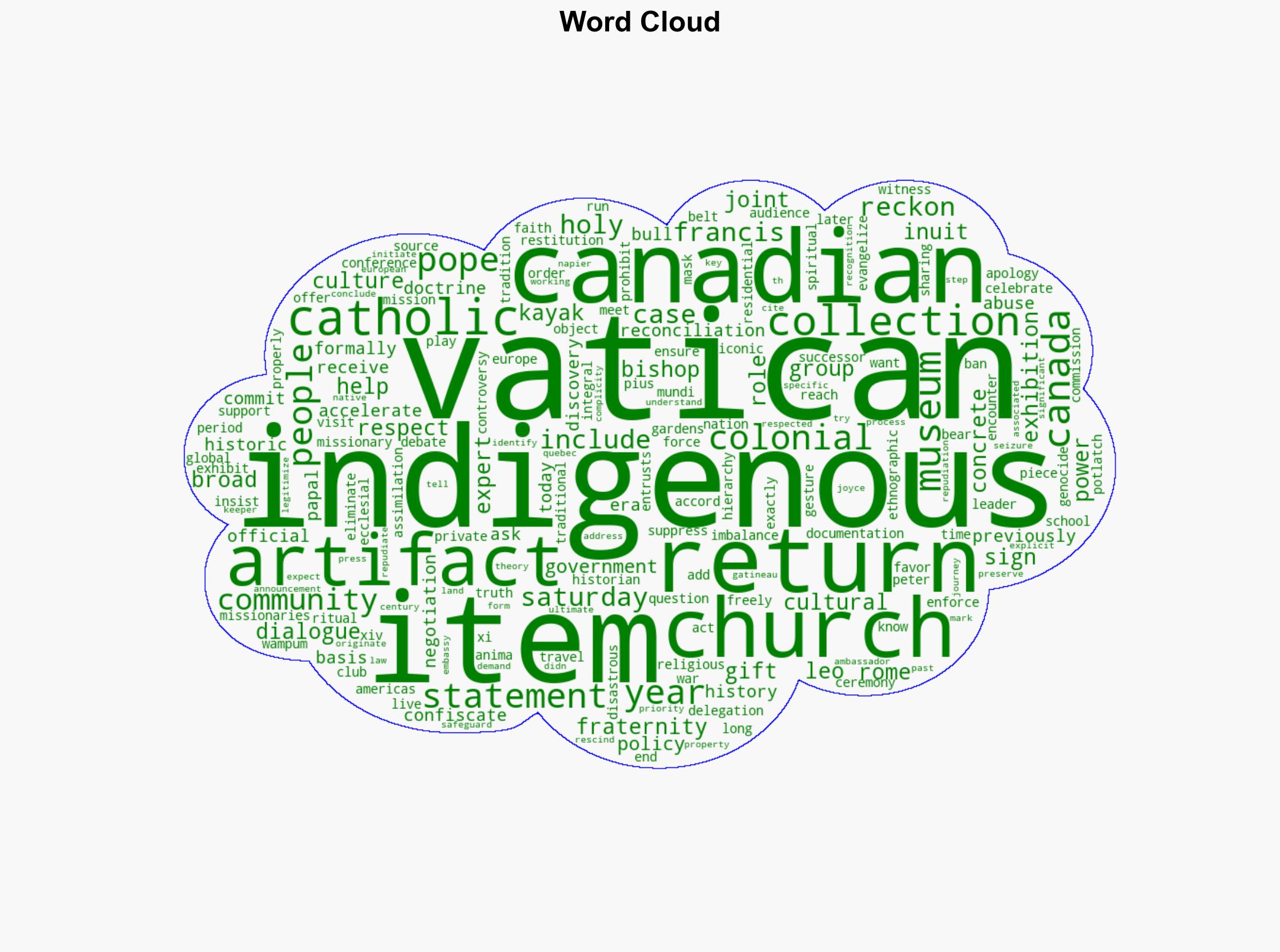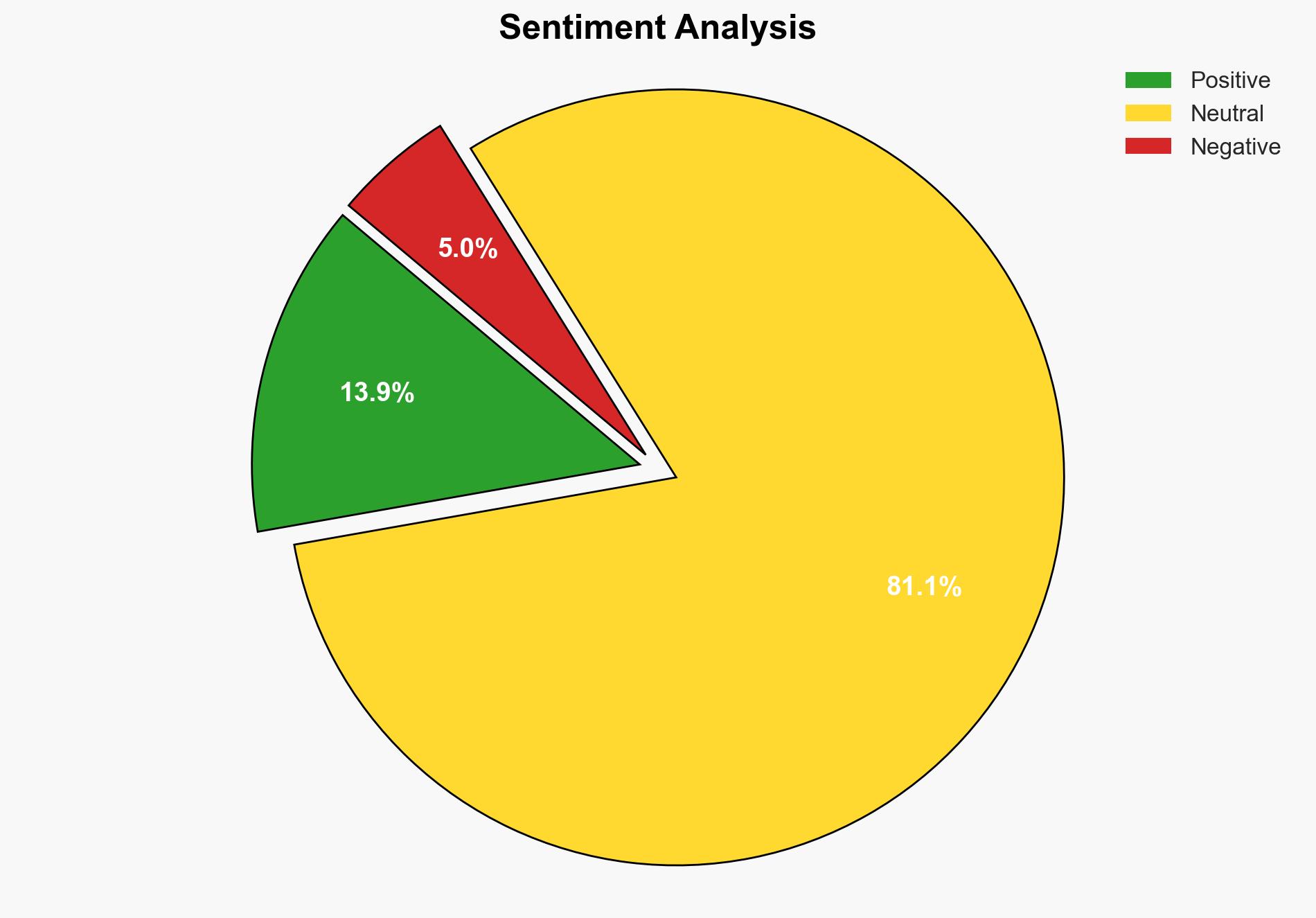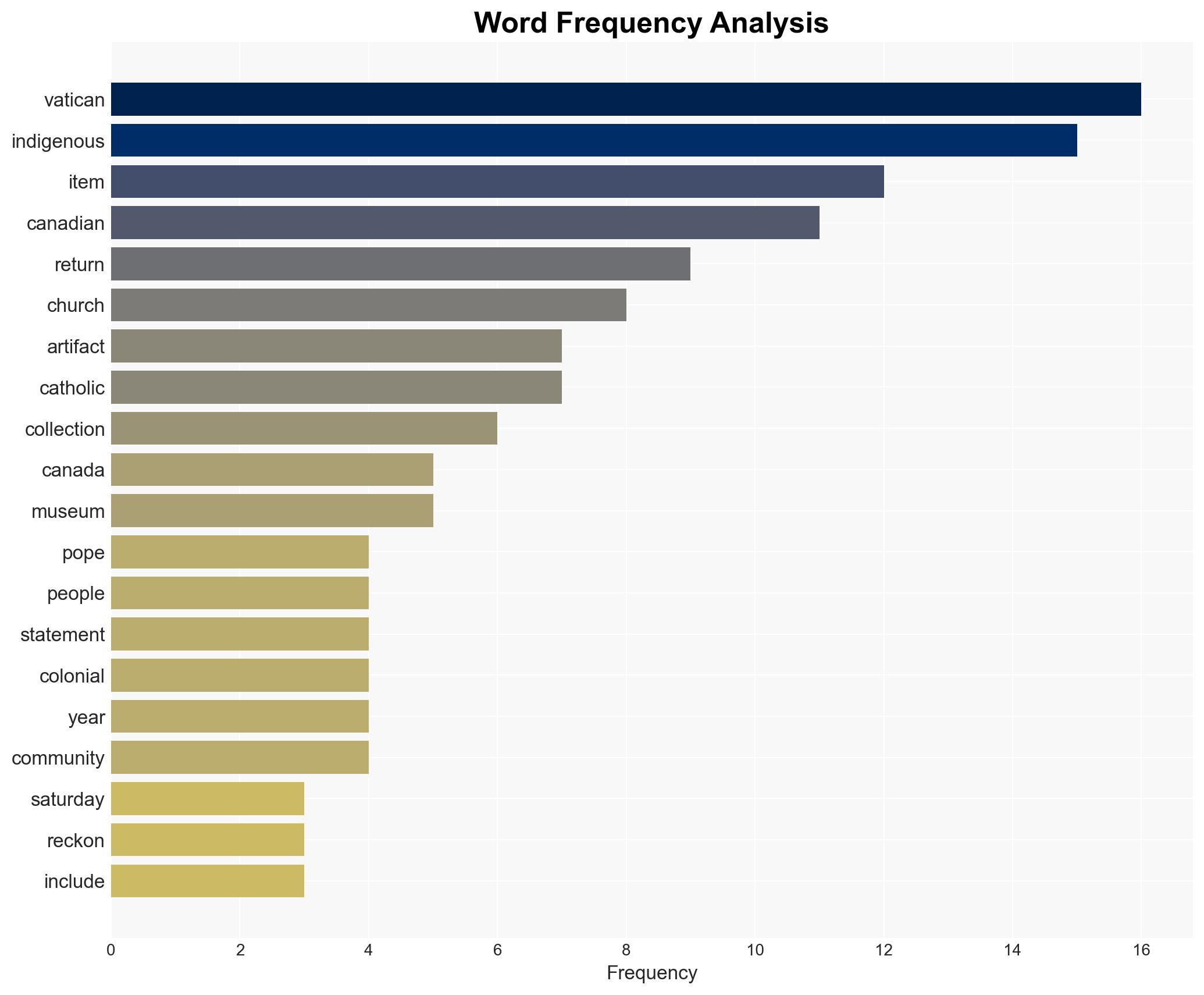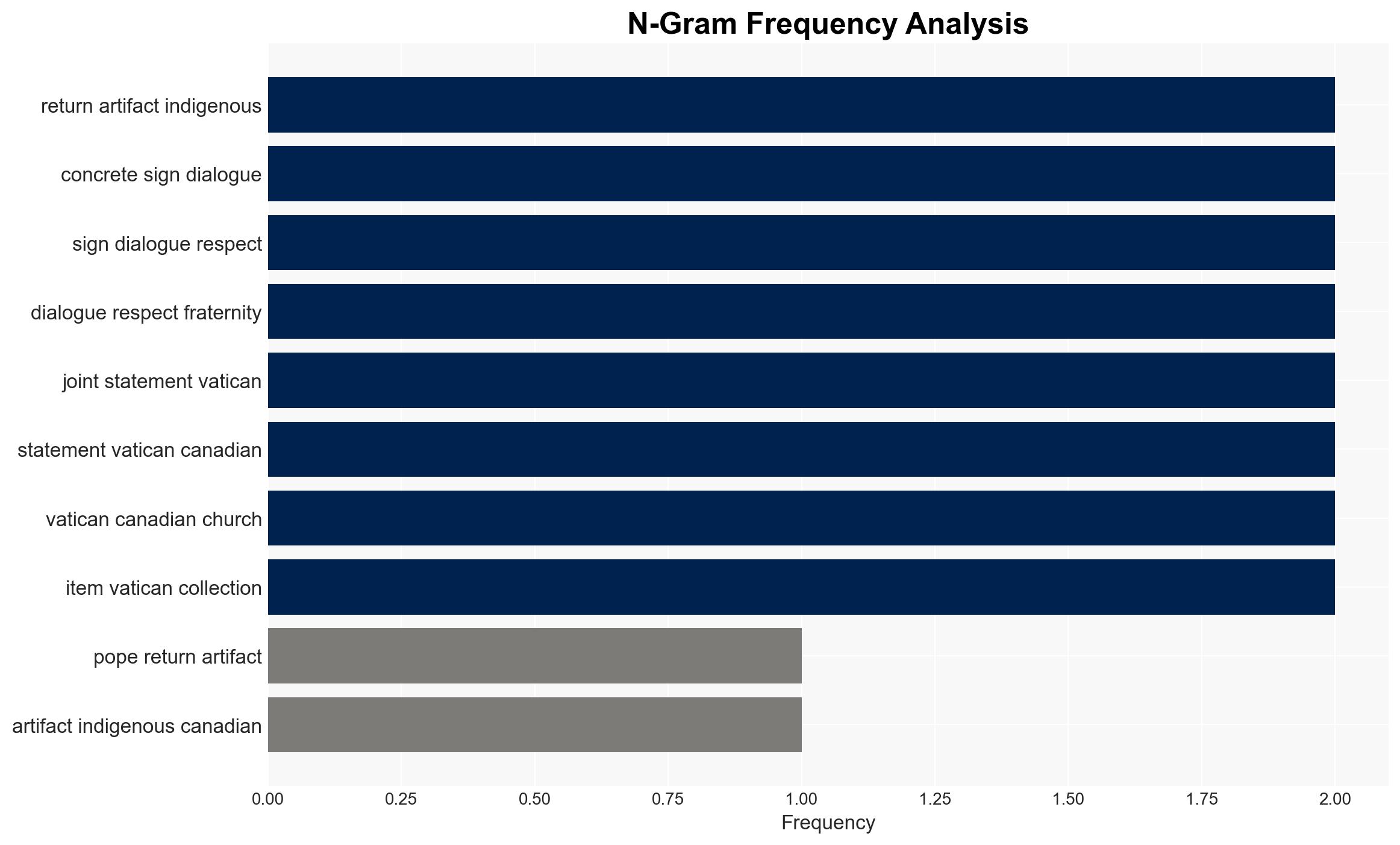Pope returns 62 artifacts to Indigenous peoples from Canada – CBS News
Published on: 2025-11-15
AI-powered OSINT brief from verified open sources. Automated NLP signal extraction with human verification. See our Methodology and Why WorldWideWatchers.
Intelligence Report:
1. BLUF (Bottom Line Up Front)
The return of 62 artifacts by the Pope to Indigenous peoples of Canada is a significant gesture towards reconciliation and acknowledgment of past injustices. The most supported hypothesis is that the Vatican aims to improve relations with Indigenous communities and address historical grievances. The recommended action is to monitor the Vatican’s future engagements with Indigenous groups and assess the impact on broader reconciliation efforts. Confidence Level: Moderate.
2. Competing Hypotheses
Hypothesis 1: The Vatican’s return of artifacts is a genuine effort to reconcile with Indigenous communities and acknowledge historical wrongdoings.
Hypothesis 2: The return of artifacts is primarily a strategic move by the Vatican to improve its global image and mitigate criticism over its colonial past.
Hypothesis 1 is more likely given the context of ongoing reconciliation efforts and the Pope’s previous actions, such as meeting Indigenous leaders and issuing apologies. However, the Vatican’s historical reluctance to fully address colonial-era abuses suggests elements of Hypothesis 2 may also be present.
3. Key Assumptions and Red Flags
Assumptions include the belief that the Vatican’s actions are primarily driven by a desire for reconciliation rather than public relations. A red flag is the Vatican’s failure to formally rescind the Doctrine of Discovery, which could indicate a reluctance to fully confront its colonial legacy. Potential bias exists in interpreting the Vatican’s motivations without considering internal pressures or geopolitical considerations.
4. Implications and Strategic Risks
The return of artifacts could set a precedent for other institutions holding Indigenous artifacts, potentially leading to broader restitution claims. This may escalate political and cultural tensions if not managed carefully. Additionally, failure to address deeper issues, such as the Doctrine of Discovery, could undermine reconciliation efforts and fuel further criticism of the Vatican.
5. Recommendations and Outlook
- Encourage continued dialogue between the Vatican and Indigenous groups to build trust and ensure meaningful reconciliation.
- Monitor the Vatican’s actions regarding the Doctrine of Discovery and other colonial-era policies.
- Best-case scenario: Successful reconciliation leads to improved relations and sets a global precedent for artifact restitution.
- Worst-case scenario: Superficial gestures without substantive policy changes lead to increased criticism and strained relations.
- Most-likely scenario: Incremental progress in reconciliation with ongoing challenges related to historical grievances.
6. Key Individuals and Entities
Pope Francis, Canadian Conference of Catholic Bishops, Indigenous leaders in Canada.
7. Thematic Tags
National Security Threats, Cultural Reconciliation, Religious Diplomacy, Colonial Legacy
Structured Analytic Techniques Applied
- Cognitive Bias Stress Test: Expose and correct potential biases in assessments through red-teaming and structured challenge.
- Bayesian Scenario Modeling: Use probabilistic forecasting for conflict trajectories or escalation likelihood.
- Network Influence Mapping: Map relationships between state and non-state actors for impact estimation.
Explore more:
National Security Threats Briefs ·
Daily Summary ·
Support us
·





